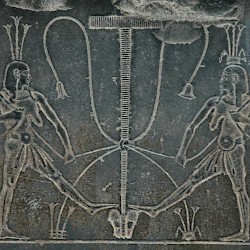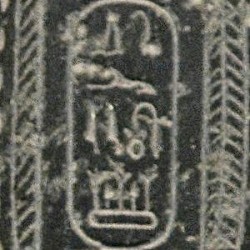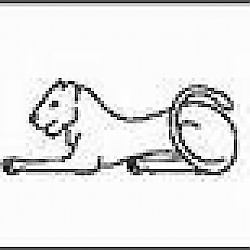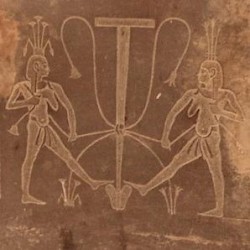Darius the Great can be boldly called one of the intelligent and worthy geniuses of the power of Iran. He was one of the famous commanders of the Cambodian army, the son of Cyrus the Great. After the death of Cambyses, Darius the Great revolted against the false Berdia, who introduced himself as the son of Cyrus, and restored the kingdom to him. Dariush’s statue is 22 cm high, weighs more than 700 grams and is made of fiberglass. This inscription was made in the workshop “Statue and Sculpture of Shahriar”. Sculptures can be of any gender, can be of any size, shape, complex or simple. But each of them definitely has a message for us. They can be mythical heroes whose names we have heard in stories, or they can be simple geometric shapes. They can be the body of a popular poet on a crowded city square, or even a clay bird on a ledge. The statues look like travel. A journey from everyday life to feeling and thinking, to beauty and, most importantly, to the dialogue of different civilizations, cultures and ideas. Sculptures can represent an idea, culture or civilization. A culture and thought that sometimes speaks to man from past centuries.
It is not entirely clear why it was moved from the ancient country along the Nile to the capital of Elam, but a probable explanation is that this happened after 486, when the Egyptians revolted against Darius’ son and successor Xerxes. He reconquered the country during the first years of his reign and it is possible that the victorious army carried off the statue of the king’s father from Egypt to Susa.
The statue was discovered on Christmas Eve 1972; today, it is in the National Museum in Tehran.
The statue, which once was covered with paint and must have stood about three meters tall, is very interesting, because it is the only free-standing sculpture from ancient Persia. (There is one reference to a similar statue of Xerxes in Persepolis.)
Reliefs are more common. Another interesting element is that it is, in fact, an empire list: an enumeration of nations subject to the great king. The difference with the more regular examples of this literary genre is that the names of the nations are written in hieroglyphs.
Belt and Base
On the belt of the statue of king Darius the Great are signs in hieroglyphic script that spell his pharaonic name: which read drjwS.

Statue of Darius the Great, base with sema-tawy (front) |

Darius’ name as cartouche: drjwS |

Darius’ name as cartouche: drjwS (drawing) |

Statue of Darius the Great, base with sema-tawy (rear) |
The central scene on the base of the statue (repeated on the back side) shows two almost identical figures: it is the god Hapi, shown in his Upper and Lower Egypt mode. (He has breasts to indicate the fertility.) Hapi is seen “binding together” the country of Egypt using the iconographic plants that represent the Two Lands – a lotus and a papyrus. This stands for “uniting” the country, a regnal power motif that was used since at least the Middle Kingdom and is known as sema-tawy. In other words, Darius presents himself in truly Egyptian style.
This is also expressed in the inscription to the left and right of the two Hapis:
To you is given all power, stability, all health and gladness of heart. All lands of the plains and of the mountains are reunited under your sandals. To you is given Upper and Lower Egypt, who offer their adoration to your beautiful face, like unto the god Ra, in eternity.
Another inscription, near the king’s right foot, says:
His Majesty has consecrated this long-lasting statue fashioned in his likeness so that the memory of his spirit would dwell forever next to Atum.
Although the statue is Egyptian in nature, Darius also seems to have carried a lotus flower and a staff in his hands, common Persian symbols. A pharaoh would have carried other attributes. Darius’ robe is also Iranian.











 Candle Holder
Candle Holder Coasters
Coasters Jewelry Box
Jewelry Box


















